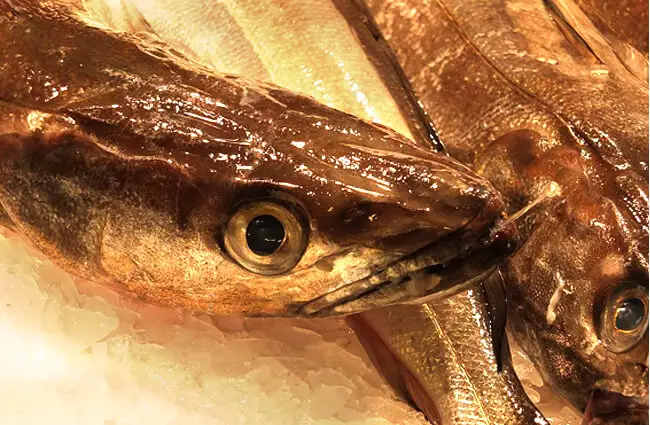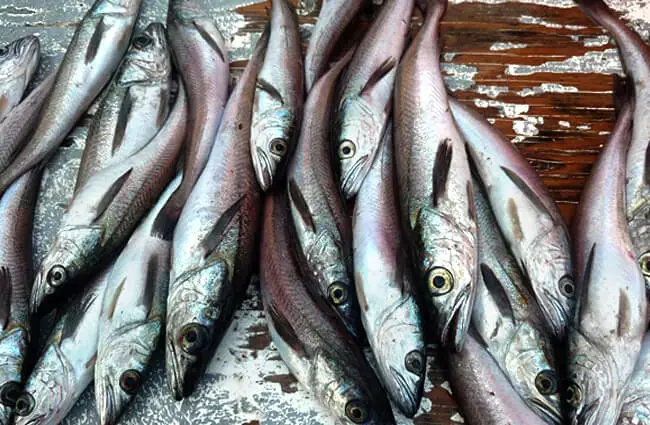A Deep Dive into the World of Hake
Hake, a name often heard in culinary circles, represents far more than just a delicious fish. Belonging to the Merlucciidae family, these fascinating creatures are vital components of marine ecosystems, exhibiting intriguing behaviors and a rich evolutionary history. This comprehensive guide unravels the mysteries surrounding hake, from its basic biology to its complex role in the ocean and its interactions with humans.

What is Hake? A General Overview
Hake are elongated, slender fish, generally silver or grayish in color. They possess two dorsal fins, with the first being smaller than the second. A distinguishing feature is the presence of a black membrane inside their gill cavity. Several species fall under the “hake” umbrella, including Atlantic hake (Merluccius bilinearis), Pacific hake (Merluccius productus), and Chester’s hake (Merluccius chesteri), which are among the most commercially important. These fish are found in various oceans around the world, primarily in temperate waters.
Habitat and Distribution
Hake are remarkably adaptable, inhabiting a range of marine environments. They are bottom dwellers, typically found at depths from near the surface to several hundred meters. Atlantic hake is prevalent in the Northwest Atlantic, stretching from Newfoundland to North Carolina. Pacific hake dominates the eastern Pacific Ocean, extending from Alaska to Baja California. Chester’s hake, a lesser known species, inhabits the waters off the southwestern coast of Africa.

Their habitat preferences influence their distribution. They favor cooler, well-oxygenated waters and often congregate near continental shelves and slopes. Young hake are frequently found in shallower coastal waters, while adults tend to migrate to deeper offshore areas.
Evolutionary History
Tracing the evolutionary lineage of hake reveals a fascinating story of adaptation and diversification. The Merlucciidae family is believed to have originated during the Paleogene period, roughly 66 to 23 million years ago. Over time, various species evolved, adapting to different environmental conditions and ecological niches. Fossil records suggest that ancestral hake possessed characteristics similar to modern species, including an elongated body shape and bottom-dwelling behavior.
The diversification of hake species is linked to geological events, such as the formation of landmasses and changes in ocean currents. These events created barriers and pathways for migration, leading to the isolation and speciation of different populations.
Diet and Feeding Behavior
Hake are opportunistic predators, with a diet that varies depending on their age, size, and location. Juvenile hake primarily feed on small crustaceans, such as copepods and amphipods. As they mature, their diet expands to include small fish, squid, and other invertebrates. They employ a combination of ambush and active foraging strategies. Often lying in wait near the seafloor, they quickly strike at passing prey. They also actively search for food, utilizing their keen senses to detect potential meals.
![Offshore Hake at the Gulf of Mexico Photo by: NOAA Photo Library [Public domain]](https://animals.net/wp-content/uploads/2020/01/Hake-4-650x425.jpg)
Their feeding habits play a crucial role in maintaining the balance of marine ecosystems. By preying on smaller organisms, they help regulate populations and prevent imbalances. They also serve as a food source for larger predators, such as sharks, seals, and seabirds.
Reproduction and Life Cycle
Hake exhibit broadcast spawning behavior, releasing eggs and sperm into the water column for fertilization. Spawning typically occurs in spring and summer, in offshore areas. Females can produce vast quantities of eggs, often millions at a time. However, only a small fraction of these eggs survive to reach adulthood.
Once fertilized, the eggs hatch into larvae. These larvae are planktonic, drifting with ocean currents. They feed on microscopic organisms and gradually develop into juveniles. As they grow, they settle to the seafloor and begin to exhibit bottom-dwelling behavior. Hake have a relatively fast growth rate, reaching maturity within a few years. They can live for up to 15 years, depending on the species and environmental conditions.
![Illustration of a Chester’s Hake Photo by: [public domain]](https://animals.net/wp-content/uploads/2020/01/Hake-3-650x425.jpg)
Ecological Role and Interactions
Hake play an important role in many marine ecosystems, helping to maintain biodiversity and ecosystem function. As predators, they regulate populations of prey species, preventing overgrazing and maintaining balance. They also serve as a food source for larger predators, supporting complex food webs. Their presence influences the distribution and abundance of other species.
Hake interact with a wide range of other marine organisms. They compete with other predators for food resources. They are preyed upon by sharks, seals, seabirds, and other large fish. They also host parasites and commensal organisms that rely on them for shelter or food.
Hake and Human Interaction
Hake have been a valuable food source for humans for centuries. It is a popular ingredient in many cuisines around the world, often served grilled, fried, or baked. Commercial fishing of hake has become a major industry, providing livelihoods for millions of people. However, overfishing has become a significant concern, leading to population declines and ecosystem imbalances.
Sustainable fishing practices are essential to ensure the long term health of hake populations and the marine ecosystems they inhabit. These practices include setting catch limits, protecting spawning grounds, and reducing bycatch. Consumers can also play a role by choosing sustainably sourced hake products.

Interesting Facts about Hake
- Hake can change color slightly to blend in with their surroundings.
- The name “hake” is derived from the Old Norse word “hákr,” meaning “shark.”
- Pacific hake is also known as whiskery hake, due to the barbels located near its chin.
- Some hake species may exhibit weak bioluminescence during certain life stages.
- Hake larvae are transparent and have large eyes, allowing them to detect predators.
Encountering Hake in the Wild and Captive Care
If you encounter a hake while diving or fishing, observe it from a distance and avoid disturbing its habitat. If you are a zookeeper or aquarium professional caring for hake, provide a large tank with plenty of space for swimming. Maintain appropriate water quality, temperature, and salinity levels. Provide a varied diet of fish and invertebrates. Monitor the hake for signs of illness or stress. Avoid overcrowding and provide enrichment activities to stimulate natural behaviors.
Hake, with its fascinating biology and ecological importance, deserve our attention and protection. By understanding this remarkable creature, we can appreciate its value and ensure its survival for generations to come.

![Red Angus Closeup of a beautiful Red Angus cowPhoto by: U.S. Department of Agriculture [pubic domain]https://creativecommons.org/licenses/by/2.0/](https://animals.net/wp-content/uploads/2020/03/Red-Angus-4-238x178.jpg)




![Red Angus Closeup of a beautiful Red Angus cowPhoto by: U.S. Department of Agriculture [pubic domain]https://creativecommons.org/licenses/by/2.0/](https://animals.net/wp-content/uploads/2020/03/Red-Angus-4-100x75.jpg)

